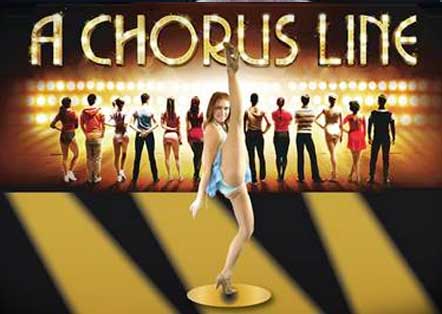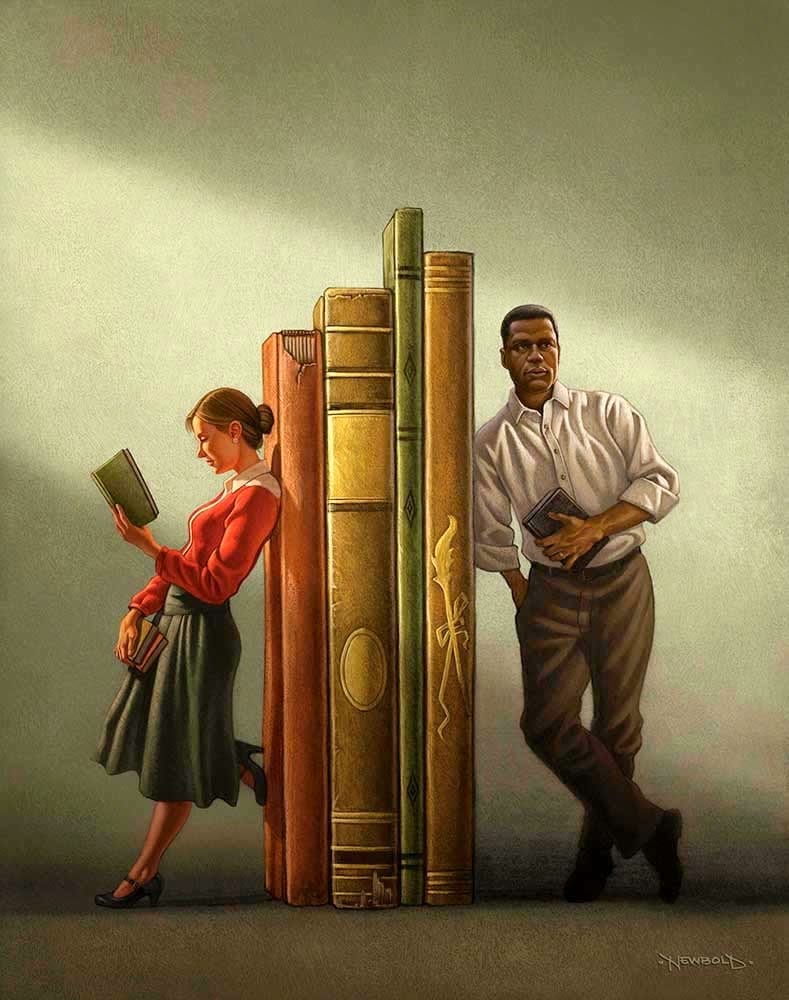PARK CITY — With songs such as “I Can Do That,” “What I Did For Love,” “Tits and Ass,” and the iconic “One,” A Chorus Line has become a staple in musical theatre, earning the Pulitzer Prize for Drama, nine Tony Awards, and eventually becoming at the time the longest running show on Broadway. With music by Marvin Hamlisch, lyrics by Edward Kleban and a book by James Kirkwood, Jr. and Nicholas Dante, this concept musical follows the lives of professional dancers striving to survive in their field. The director, Zach (played by Josh Richardson) makes the first cut after the opening scene and informs the remaining dancers that he is casting only eight dancers, four men and four women, and that the show requires the dancers to act in minor roles. Therefore, he wants to not only pick strong dancers, but to get to know them each personally to ensure their abilities to act. Zach puts each of the actors on the spot by asking them personal questions about their life and inquiring as to what made them want to become a dancer. Their responses require them to be open and vulnerable, which transitions into solos and monologues as flashbacks where they recount important experiences from their past, which was accented through a strong lighting design by Peter Mayhew.
The opening number “I Hope I Get It” is a recreation of a professional dance audition, and at the end of the number Zach makes his initial cuts. The video design by Jon Grippe successfully created a mirror on the back wall of the stage that enhanced the spectacle of the opening. However, the small Egyptian stage felt extremely crowded and the skill level of the dancing on the stage was a far way off from professional dancers, giving the choreography a sloppy feel and making it difficult to distinguish the talented dancers from the group. The dancers who made the first cut were certainly stronger than those cut; however the majority of them still lacked the skills needed to be believable professional dancers. Rather, I felt I was watching a dance audition for a local Utah theater production, rather than a New York City dance call.
Therein lies the problem of this production: A Chorus Line is a show about dancers. Furthermore, every lead actor really needed to be a “triple threat” (meaning they are an equally strong dancer, singer, and actor) for A Chorus Line to succeed. As the show progressed, each of the various actors’ weaknesses became exposed, and only a few of the actors really could meet the demands of their roles. Of the lead actors, Elena Dern shined the brightest. Her dancing was equally matched by a powerful singing voice and strong acting that made her excel in her solo “Nothing,” as well as her heartfelt delivery of “What I Did For Love.” Dern made “Nothing” an original performance with a nice balance of comedy and vulnerability. Erin Carlson as Cassie, the older dancer that had been in a relationship with the director Zach, acted the part wonderfully. Her and Zach’s scenes discussing their past relationship and career were full of tension and clear conflict. In her solo “The Music and the Mirror,” her powerful voice soared with great emotion. Her powerful belt is as close as you will get to a Broadway caliber singer in Utah. Unfortunately, I had trouble believing that Carlson was a professional dancer during the iconic dance solo in this number. The choreography was fairly simple yet executed with imperfect technique, which didn’t match up to Carlson’s acting and singing abilities.
Other strong performances included Cate Conroy as Shelia. Conroy had the pathos and sass down for this hard-shelled aging yet sexy dancer. She brought out the comedy as she provided sarcastic responses to Zach’s questions, such as when he asks her, “Do you always come on like this?” She replies, “No. Sometimes I’m aggressive.” Conroy also showed her versatility with some tender moments when she revealed how her father neither loved nor cared for her and her young mother during “At the Ballet,” and how she discovered at age six that ballet provided an escape for her unhappy life. David Higley as Mark Anthony was an acting standout. His knack for comedy enhanced many lighter moments of the production, particularly his recounting of the time as a teenager that he told his priest that he thought he had gonorrhea during “Hello Twelve, Hello Thirteen, Hello Love.”
A chief disappointment of the production was the complete removal of tap in the production. Most notably during Mike’s solo “I Can Do That” and the number entitled “Tap Dance” just didn’t work as soft shoe numbers, making lines in the script about tap or missing sounds nonsensical. Natale McAneney played Val with strong dance technique, yet her signature number “Tits and Ass” was low energy and underwhelming, and wasn’t as funny as it could be. Cooper Howell’s dancing as Paul was impressive and at a professional level, and accompanied by a nice clear singing voice. Yet, his monologue had an inconsistent accent and failed to convey Paul’s emotional state.
The live pianist Jeanne McGuire (who also served as music director) supplemented the recorded tracks successfully and helped to create the world of the play, which contributed to the believability of being at an audition. McGuire was successful in helping the ensemble to blend and create strong group numbers, particularly in the montage sequences and “What I Did For Love.” However, the sound balance (under the design of Hyrum Summerhays) was at times off, and the tracks frequently overpowered the voices and occasional microphone lapses kept actors from being heard, must notably during the trio section of “At the Ballet.”
The direction by Amber Hansen kept the pace moving briskly and she successfully transitioned between the monologues and the group numbers. Hansen’s decision to have Zach move about the theater aisle ways and speak over a microphone from various house positions was a strong choice that pulled me into the play. The choreography by Stephanie Thomas was often not at an advanced enough level for a show about professional dancers (partly due to the skill level of the actors, but even some of the less impressive numbers lacked cleanness and clarity). Yet the final number “One” was satisfying in the matching gold costumes and was well executed, bringing the audience to their feet half way through the number to applaud one of the most famous numbers in musical theater. The costumes (designed by Elizabeth Miller Black) were colorful and interesting, and they successfully transported these dancers back to the 1980’s with period athletic attire, bright spandex, and leg warmers (accompanied with big hair and glamour makeup). The flashy matching gold costumes in the finale also dazzled and contributed to the successful finish.
However, the price of tickets was too high for the quality of the production. A non-professional theatre production should reflect the quality of the show. The $35-$60 ticket range is not on par with similar quality productions elsewhere in the state. Though I applaud paying actors and bringing seldom produced works to Utah, at these ticket prices I expect professional theatre and the standard of excellence must be very high to justify the cost. Despite some criticism, there is some laudable work in this production, and A Chorus Line is a musical that theatregoers should be sure and experience.






